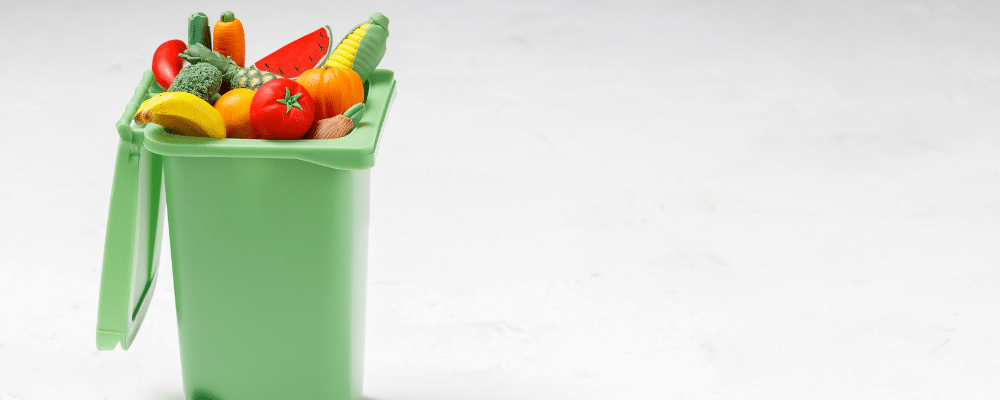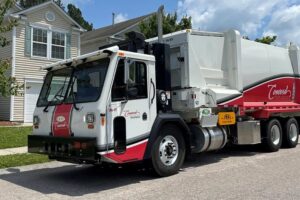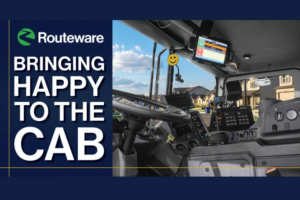Adding organics to your curbside repertoire? Here’s how!
In the never-ending quest to divert waste from landfills, cut costs, and align municipal efforts with ever-changing mandates, adding organics curbside collection to existing solid waste and recycling programs can be a natural next step for any municipality. Beginning any new program, though, can be a bit of an undertaking, and quite a daunting task.
But it doesn’t have to be all bad.
Whether you’re looking to kick off an organics program of your own, or you’re just venturing out to learn a bit more about what it would entail, ReCollect is in a unique position to help you through the process because we have customers who have been there. With their shared knowledge, we have broken down the process and have compiled a bit of a cheat sheet to help carry you through the process.
Meeting Mandates
Governments and municipalities across North America are taking action to divert waste, reduce greenhouse gas, and more, sparking an influx of mandatory organics and food scrap collection services. The state of Vermont, for instance, banned the disposal of food scraps in trash or landfills beginning July 1, 2020, and required trash haulers to provide food-scrap collection services to non-residential customers and some apartment buildings, unless another hauler could provide the service.
Residents separate their food scraps for curbside disposal, take them to drop-off sites, or use them for backyard composting. A website, VTrecycles.com, helps residents stay informed of regulations and their options.
California passed similar legislation in 2014, the same year a waste characterization study found that more than 30% of the state’s roughly 30 million tons of annual waste deposited into landfills could be used for compost or mulch.
Mandates there required businesses to recycle organic waste beginning in 2016. Local jurisdictions would have to offer organic waste recycling programs — including items such as food waste, prunings such as leaves and grass, non-hazardous wood, and food-soiled paper — for businesses and some multifamily residential units. These requirements took effect over time, and allowed for some exemptions for rural counties.
State legislation also calls for a vast reduction in the overall amount of organic waste sent to landfills in the coming years. While some municipalities in California already have curbside organics collections, the state is calling on other communities to add these services, and encouraging residents to set up home composting systems, too.
Start With Research
Prior to getting into the nitty-gritty of the planning process, it’s a good idea to figure out some of the overall nuts and bolts of the potential operation. Here are a few things to keep in mind:
- Why do you want to establish an organics collection program? Consider their benefits, including waste diversion, reduced disposal tonnages, cost savings, and fewer greenhouse gas emissions. In addition, organics collection can serve as a potential revenue source if you decide to sell compost to consumers.
Simcoe County, Ontario, for instance, established its Curbside Organics Collection Program in 2008 after experiencing a shortage of landfill space, an issue many municipalities face. Among other strategies — including limiting garbage to one bag per week — the county also developed a new curbside waste division program with an organics (kitchen waste) collection, county officials said. - Establish some goals. These goals, in part, will be based on why you want to establish an organics collection program in the first place. Keep in mind, too, how you can measure your success. Do you want to divert a certain percentage of waste in the coming decade? Do you want to eliminate further food and yard waste from your landfill altogether?
- Determine where the material could go to be processed into a marketable compost material for landscaping. Are there nearby facilities where you could haul the material? Would it be feasible to build your own processing facility? The latter certainly requires a lot of planning and a much larger budget, so most local governments choose to haul materials to existing facilities.
- What would the program cost? Estimate capital and operational costs, and where you could save money. You may consider: new trucks or collection routes; disposal costs; labor and hauling costs; employee hiring, training and retention; promotional and educational materials; pilot programs; waste audits before and after pilots; participation studies; and new collection bins.
Conducting waste audits before and after a pilot study and participation studies can help you determine how much waste is generated so you can decide what size and style of bin you’ll need.
When determining costs in Simcoe County, officials budgeted for a communications consultant to help develop a marketing strategy; a media event to kick off the campaign; a calendar, including its design, printing and distribution; curbside and kitchen containers, plus the cost to add a logo and motto; educational kits; advertising, including newspapers, radio, and billboards; promotional giveaways, and more.
In both Simcoe County and the City of Richmond, British Columbia, officials also kept in mind what would be spent on a contract with a composting facility, as well as tipping fees versus compost processing fees.
Establishing a Pilot Program
To begin a pilot, you first need to determine who will be part of your study group. Some municipalities allow residents to sign up for the program, while others choose to select particular neighborhoods that are representative of the community as a whole.
While allowing sign-ups will illustrate what the program would look like with people who are interested in the cause, choosing neighborhoods may give you a better overall idea of what issues you may find if you move forward with a full roll-out of the program. Getting out on the street and conducting curbside audits throughout the pilot can also clue you in on what participation rates, tonnages, and contamination rates may be.
In Richmond, after the city council approved a food scraps recycling program, the city implemented the Green Can program to collect food scraps from residents in single-family homes in 2010, officials said. From there, the city conducted a pilot program for multi-family complexes in 2011 to test cart-based collection.
For the multi-family program expansion, City of Richmond officials selected complexes and units for a pilot program based on a number of factors, officials said, including ease of serviceability, interest, and whether their collection methodology was consistent with other collection services, such as recycling and trash. Because of the heavyweight of the cans used in the single-family Green Can program, the city identified carts as a better solution using semi-automated collections, which were later implemented city-wide.
It progressively rolled out other pilot studies and programming to prepare for the impending regional ban on food scraps in the landfill, and in 2015, expanded its Green Cart program for food scraps to all 30,000 residents in multi-family complexes.
City officials also said gathering community input through a survey during program pilots can offer additional and very beneficial information to help you design a permanent program.
Measure Up
With all of the time and effort at hand, you need to see where you stand. Conducting a waste audit with pilot participants before and after your program will help give you insight you need to decide whether to shelf the idea or roll out a program in full, and what, if anything, needs to be tweaked. The data collected from the pilot program can provide you with invaluable information to better organize a permanent program.
In Simcoe County, the pilot project, which included 4,000 households, saw an increased diversion rate reaching 57% as compared to the County’s average diversion rate of 32% at that time.
Waste audits also will help you identify contamination issues and potentially highlight areas for more education. It also will give you a snapshot of how much waste is reduced once organics are taken out of the equation. Then, you can compare disposal rates of trash versus organics, and get a better idea of costs versus cost savings, and more.
Teamwork Makes The Stream Work
When rolling out a program of this magnitude, you can use all the help you can get to get the community or pilot participants on board. The folks in Simcoe County hosted a large event for area media to dramatically unveil their new campaign and corresponding superhero mascot, Diversion Man.
The county tapped into other modes of communication, too, including an education kit delivered to residents’ doors, newsletters, a direct-mail calendar, advertisements in several newspapers and radio stations, billboards and posters. They also developed promotional items, such as T-shirts, reusable bags, and temporary tattoos.
Their campaign slogan, Be A Hero – Fight Garbage, and the corresponding superhero became iconic symbols to create awareness and generate conversations about the new organics curbside program at a glance, regardless of language and comprehension levels, officials said.
In addition to the marketing firm it worked with, Simcoe officials said a combination of local media outlets, the county’s school board, the support of a handful of companies who donated samples, and more were invaluable resources to them as they spread the word about their new program.
In Richmond, city officials designed communication materials to address barriers and encourage the recycling of food scraps, as well as reinforced messages about the disposal ban on food scraps.
Like Simcoe County, Richmond ran print ads in newspapers, sent letters to residents and property managers, conducted outreach at community events, and more.
ReCollect also offers several digital tools that could help you spread the word, too. For instance, our Waste Wizard tool helps folks determine which item goes in which bin, and our Waste Sorting Game helps folks test their knowledge while teaching them how to recycle properly in a fun, easy and resource-friendly way.
Through Trial and Error
Sometimes, no matter how much you research, plan and prepare, you just don’t know what you don’t know. While Simcoe County’s marketing campaign that spread the word about its new curbside program was extremely successful and achieved all of its goals, officials said they could have begun the process sooner. Developing the design, slogan, and gathering feedback took considerably more time than they anticipated.
In some cases, you just have to roll with issues as they arise. In Richmond, for instance, city officials said it would have been helpful to know the total amount of garbage disposal in multi-family buildings. This would have allowed for much better calculations to determine multi-family diversion rates associated with organics, they said. Because garbage collection is provided by the private sector, though, the city was unable to gather this data.
Worth The Work
Facing short-term struggles, more often than not, is worth it when working to achieve long-term goals. Richmond, for example, has diverted more than 186,746 tons of food scraps and yard trimmings with its residential organics collection program since its inception in 2010, officials said.
In addition, the city has been able to turn compost to nutrient-rich soil for landscapers, reduce community greenhouse gas emissions, and more.
For decades, governments and municipalities have worked to cut back on waste and recycle more, and adding an organics curbside collection program can serve as another way to help you reach your goals.
If you’re looking to take the leap, our digital recycling education and outreach tools will make it easier for you and your team to connect and engage with your audience, save time and resources, foster better recyclers, and more. After all, we’re in this together!





